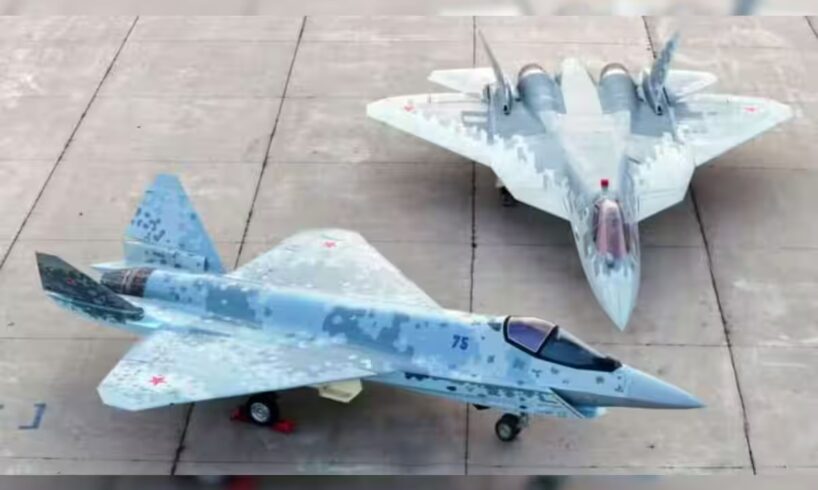
Su-57 vs Su-75: Russia has offered India two of its stealth fighter jets, the Su-57 and the Su-75. The Su-75 is still in the final stages of development. The offer comes ahead of President Vladimir Putin’s visit to India next month, making it a significant move in defense diplomacy. Analysts believe India could use this opportunity to secure the Su-57 to fill critical gaps in its air force, which faces a shortage of modern fighters.
Moscow claims that the Su-75 is the most affordable fifth-generation stealth fighter in the world, priced between 30 and 35 million dollars. It is designed with a top speed of Mach 1.8, a range of 3,000 km, a ceiling of 54,000 feet and a payload of 7.4 tons. The aircraft can carry its weapons internally, maintaining stealth capabilities.
The biggest part of Russia’s offer is local production in India. This would allow the Hindustan Aeronautics Limited (HAL) to not only assemble the jets domestically but also export them to Asia, Africa and the Middle East.
Add Zee News as a Preferred Source
Russia has also promised to share advanced technologies, including stealth design, AI-enhanced cockpit systems, advanced sensor fusion and future network-centric warfare systems, technologies Western countries refuse to share with India.
The HAL has shown readiness to participate in joint development with Russia, though it has not specified which fighter jet (Su-57 or Su-75) the collaboration would involve. HAL officials emphasised comfort in working with Russia and cited prior experience assembling jets such as the MiG-21, MiG-27 and Su-30MKI.
Analysts say this joint development could give India full intellectual property rights, strengthen self-reliance and protect against pressures or import restrictions from other countries.
Experts also point out that local production of the Su-75 could bring economic benefits similar to the BrahMos missile programme, including potential export revenues, without affecting other indigenous projects like the Advanced Medium Combat Aircraft (AMCA).
The Su-75 is a lightweight and single-engine stealth fighter, while the AMCA is a twin-engine medium-weight stealth aircraft. Both have separate operational roles. Producing the Su-75 locally would remain cost-effective while meeting India’s immediate fighter requirements.
Russia says the Su-75 will be available at an unprecedented low cost for a fifth-generation fighter and will include features like a supercruise-capable AL-41F1S engine, advanced cockpit and avionics from the Su-57 and fully internal weapon bays. The stealth performance is claimed to be uncompromised despite its payload.
The Su-57 is already a proven fifth-generation multirole fighter designed for both air-to-air and air-to-ground missions. Its key advantage lies in its stealth profile, radar-absorbing materials, airframe and internal weapon bays, which allow it to remain undetected at long ranges.
The analysts say it also carries capabilities for the Suppression of Enemy Air Defenses (SEAD) and Destruction of Enemy Air Defenses (DEAD) missions that are not present in jets like the F-35 or China’s J-20. These missions allow it to blind and destroy enemy air defense systems, making it a formidable tool for the Indian Air Force.
Considering ongoing developments, analysts believe India could finalise a deal for the Su-57 while continuing discussions with France for additional Rafale jets. The Indian Air Force faces an urgent need to fill fighter gaps, making the choice between Russian stealth fighters and Western aircraft a key strategic decision in the coming months.





